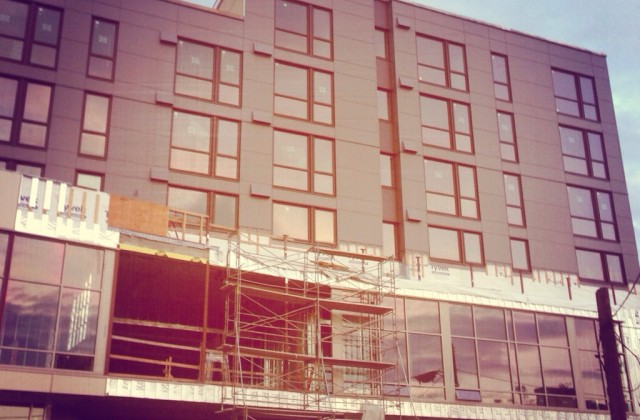Can’t We All Just Get Along: Common Ground with Non-Profit Developers
I was given the opportunity this week to present to the board of the Capitol Hill Housing Improvement Program (CHHIP). CHHIP has been a leader in building affordable housing in Seattle for many years. In fact, the first person I met with when urging new development in the South Park neighborhood back in the 90s was Chuck Weinstock who was, at the time, the Executive Director of CHHIP. Even though we were on the other side of town, Weinstock and CHHIP we considered the best place to start when considering affordable housing development.
CHHIP has a different leader now, Chris Persons, who has great experience and dedication to the field as well. So I was honored and pleased when he asked to talk with his board about incentive zoning. This is a tough subject, because we don’t think incentive zoning is an incentive at all; in fact, we think incentive zoning is actually contributing to Seattle’s housing problems by putting an inhibitive tax on new housing instead of actually encouraging more housing. But CHHIPs board has an open mind on the subject, or at least open minded enough to let me speak with them.
My take away point, at the end, is that non-profit and for-profit developers have much more in common than might appear on the surface. Both non-profit and for profit developers face land use regulations, design review, utility hook up issues, challenges with surrounding neighbors, and land and construction costs. It isn’t easy to build affordable housing in Seattle whether the developer is a non-profit trying to build artist live work space or a for profit developer trying to build mid or high rise. I am hoping that we can find more of that common ground, even while we disagree about incentive zoning. When it comes to building housing regulated by a City that sometimes has more rules than ideas, we’re all in this together.
Here’s the points I made in the presentation including the familiar Power Point slides we used earlier this year.
Presentation on Incentive Zoning to Capitol Hill Housing Improvement Program
June 9, 2014
Introduction
Seattle has a tendency when it sees a problem, to try to solve that problem with rules, programs, and regulatory interventions. We’re very good at using the lead end of the pencil, but we haven’t learned to use the eraser end yet.We know that any encumbrance we put on land and its use can
- Lower it’s value;
- Increase costs to build on it;
- Impact risk; and
- Reduce housing supply (by reducing density with FAR restrictions)
Rules and regulations are important, though. We need them. Compare the earthquakes in Chile and Haiti in recent years. Both were massive quakes, but because Chile has a very strong code, they suffered far fewer deaths and damage than Haiti that had no code at all.
Taxes on the use of land are the same, lowering value and increasing costs and risk. However, they are important to
- Incentivize what we want (more housing), and dis-incentivize what we don’t want (inefficient use of scarce resources, like land);
- Generate revue for public benefits; and
- Redistribute wealth
The only revenue in a development deal comes from rents; that’s it. There is no Santa Claus or Tooth Faerie in real estate development.
Costs added by rules, regulations, and taxes can only be absorbed by the rent structure. This is true of ALL housing projects whether they are subsidized or market rate.
When we reduce land value, increase costs for building new housing or preserving existing housing with rules, regulations, and taxes, we reduce housing supply. This is especially true when we sacrifice units of housing by reducing FAR.
If supply is lowered, and demand keeps going up, then prices will surge, and renters will compete renters rather than landlords with landlords; this hurts those with less money to spend on housing the most.
Therefore, I would suggest that if we want to put downward pressure on price, we need to create more supply, fewer rules and costs for all housing products everywhere in the city. Incentive zoning doesn’t do any of these things.
What’s the solution?
The Housing Development Consortium, CHHIP, other non-profit developers, and Smart Growth Seattle have more common interests than divergent ones. We ought to
- Work together to increase housing supply and choice everywhere in our city for all levels of income;
- Reduce rules, regulations, and taxes that increase costs;
- Explore how we might use 4 percent tax credits in mixed income projects in the city; and
- Collaborate on changes and innovation in regulation and financing that would support the development of typologies that support families, especially courtyard housing and townhomes.


